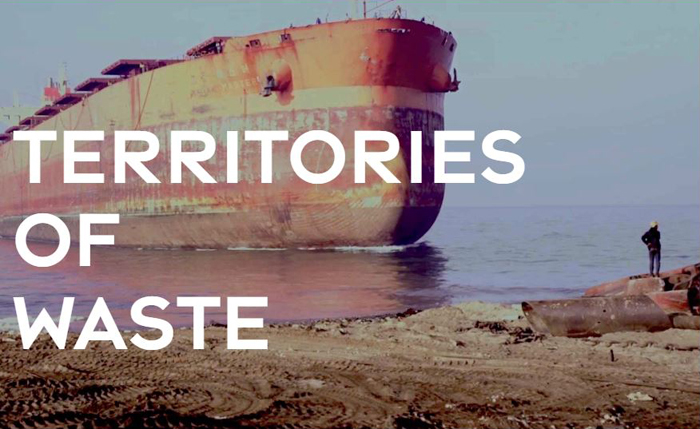Press Release
The current planetary crisis has ensured that the proliferation of environmental pollutants has once more become a focus of artistic practice, alongside climate change and mass extinction. The group exhibition Territories of Waste at Museum Tinguely focusses attention on this contemporary artistic engagement and asks where such discussions are taking place today, as well as taking a new look from this perspective at the art of the second half of the twentieth century. The group show is intended as an accumulation or gathering of many voices that takes the dynamically mixed quality of waste seriously as a structuring concept. The exhibition landscape that spreads out from a central point is connected by six main themes that run through it like a network.

Territories of Waste - On the Return of the repressed
Museum Tinguely, Basel (Switzerland)
14.09.2022 - 08.01.2023

In the 1960s, the artists of Nouveau Réalisme and Junk Art (including Jean Tinguely) reflected the profound social and economic shift from post-
In contemporary discourse and artistic practice, there is a focus on the hidden and repressed ecological, geological and global conditions of our consumerism. This has been accompanied by increased public awareness of the invisible micro-
In the 1960s, the artists of Nouveau Réalisme and Junk Art (including Jean Tinguely) reflected the profound social and economic shift from post-
In contemporary discourse and artistic practice, there is a focus on the hidden and repressed ecological, geological and global conditions of our consumerism. This has been accompanied by increased public awareness of the invisible micro-
The territorial movements of waste are dealt with along colonial geographies that involve both the exporting of rubbish and the waste generated during raw material extraction in neo-
Waste disposal today is a highly automated industry. In their structure, modern waste management facilities reflect the separation between society and what it discards. Waste and its disposal are supposed to remain as invisible as possible. At the same time, contact with waste products and the physical labour associated with cleaning are closely linked to social hierarchization, exclusion, and even stigmatization. This social dimension, including issues of race and gender, forms a second thematic focus.
Other works in the exhibition deal with the pollution of air, water and the oceans. They render visible the micro-
Territories of Waste in the literal sense – devastated terrain, manmade wastelands, war and disaster zones – are a fourth focus. The traces of our industrialized and nuclear age have inscribed themselves into landscapes. In its double meaning of both barren, infertile land but also fallow, unused land, however, the notion of wasteland points to both loss and potential.
In another section, the exhibition goes beyond physical and geographical territories, exploring concepts of waste and cleaning in the digital sphere. What happens to files that we put in the “trash”? It turns out that even when it is deleted, data doesn’t just disappear.
Finally, with the concepts of compost, humus and cohabitation, the show explores the potential of waste for new ways of thinking and living, as well as for new alliances. These works link and traverse the fields of nature and culture, humans and their environment.
Artists: Arman, Helène Aylon, Lothar Baumgarten, Anca Benera & Arnold Estefán, Joseph Beuys, Rudy Burckhardt, Carolina Caycedo, Revital Cohen & Tuur Van Balen, Julien Creuzet, Agnes Denes, Douglas Dunn, Julian Aaron Flavin, Nicolás García Uriburu, Hans Haacke, Eric Hattan, Eloise Hawser, Fabienne Hess, Barbara Klemm, Max Leiß, Diana Lelonek, Jean-
The exhibition is curated by Dr. Sandra Beate Reimann.

Hira Nabi, «All That Perishes at the Edge of Land», 2019 (Filmstill); Film, Farbe, Ton, 30 min; Courtesy the artist © Hira Nabi
Exhibition 14 September 2022 -

© ArtCatalyse International / Marika Prévosto 2022. All Rights Reserved